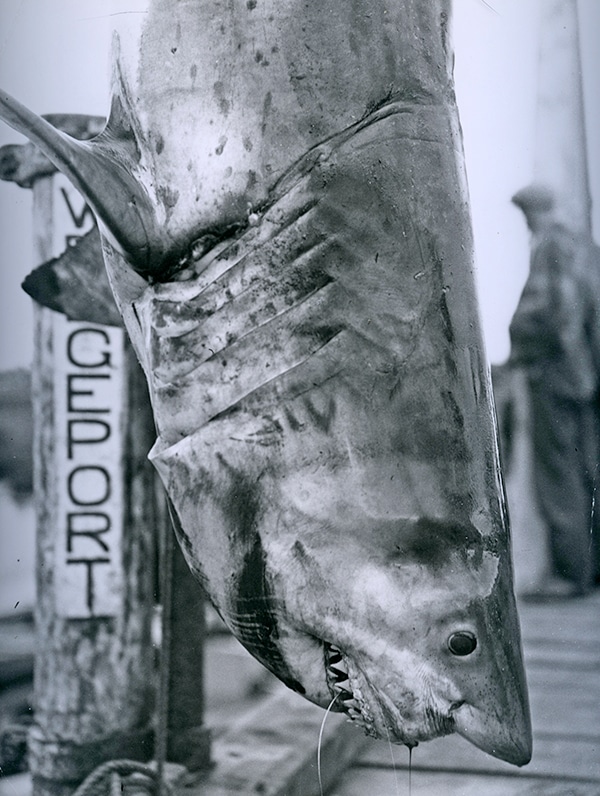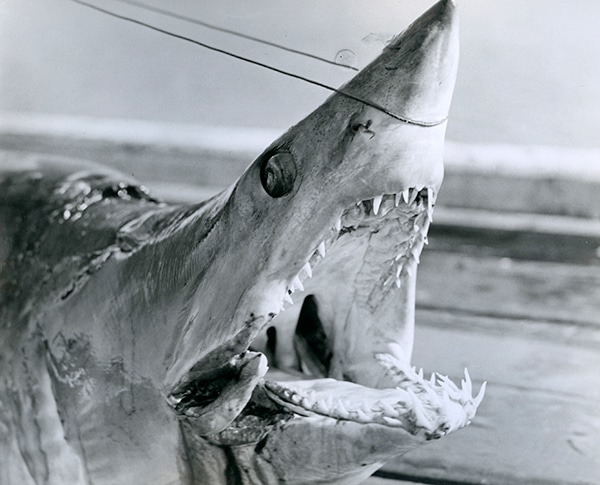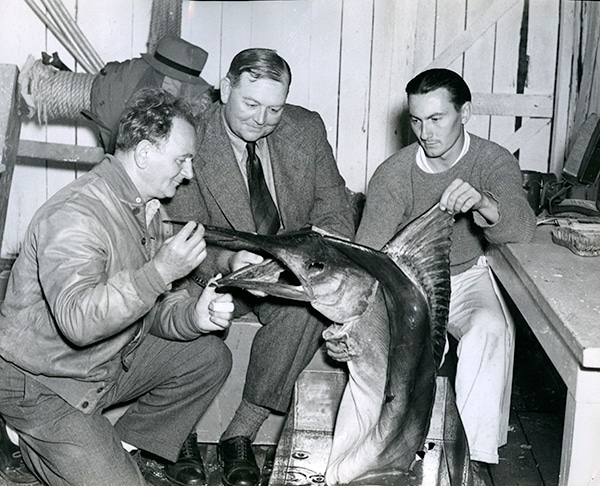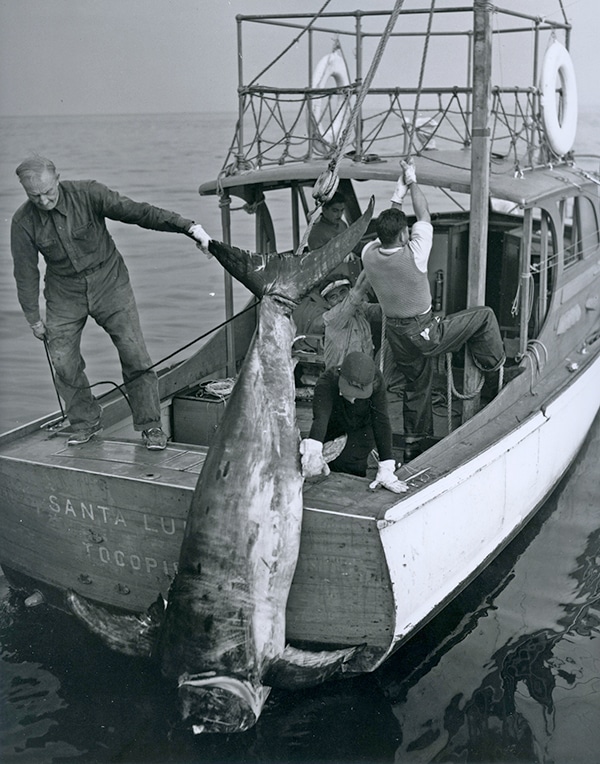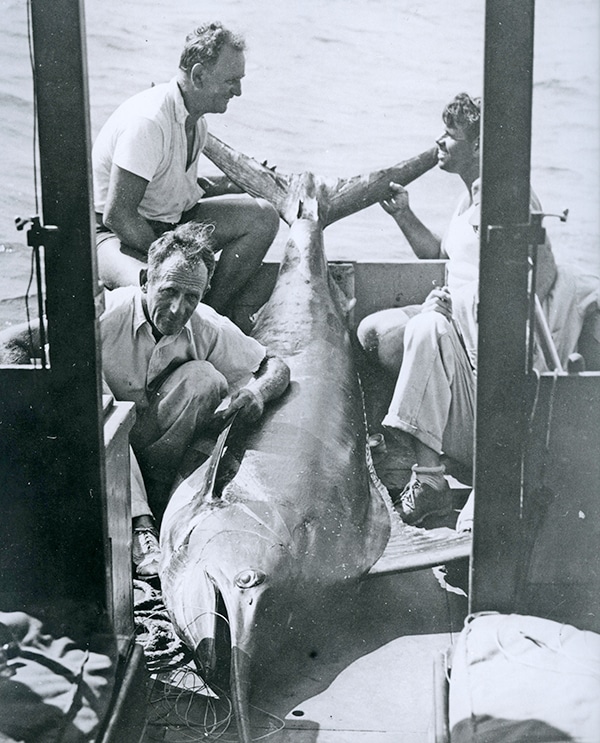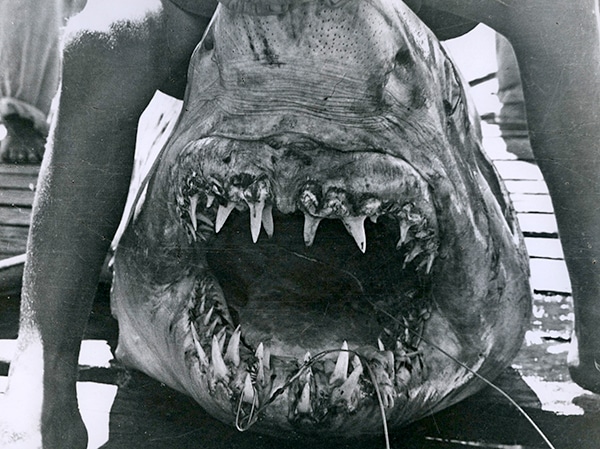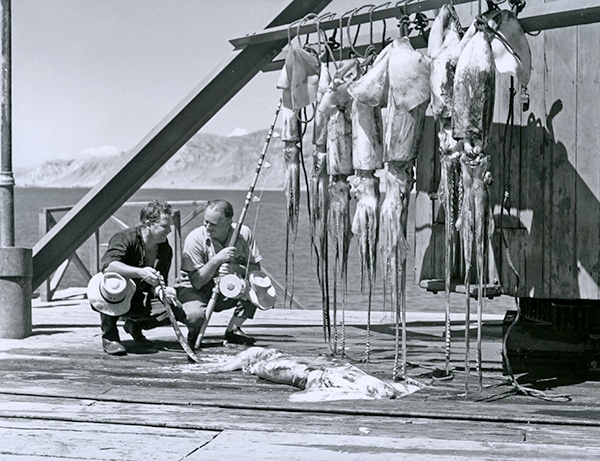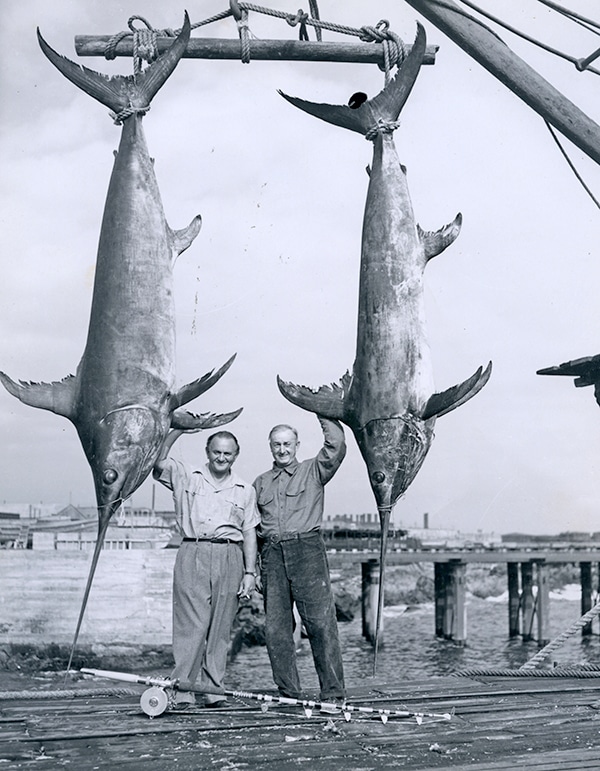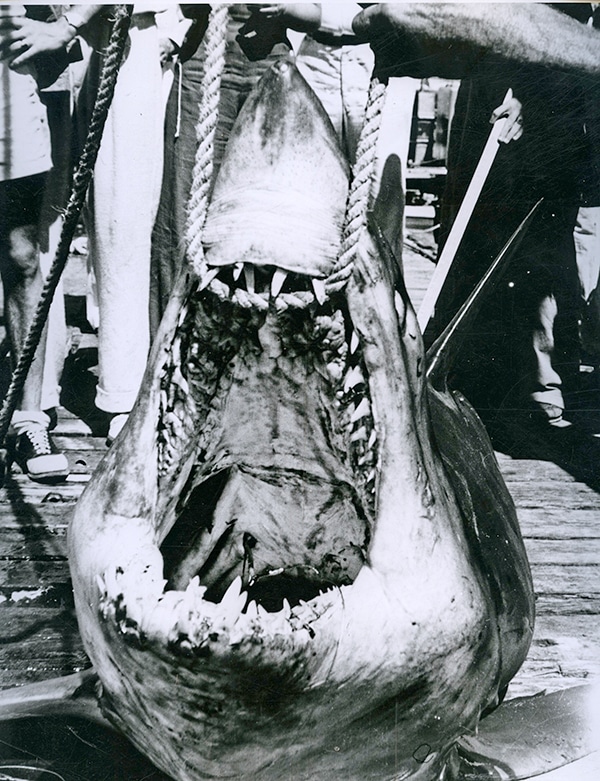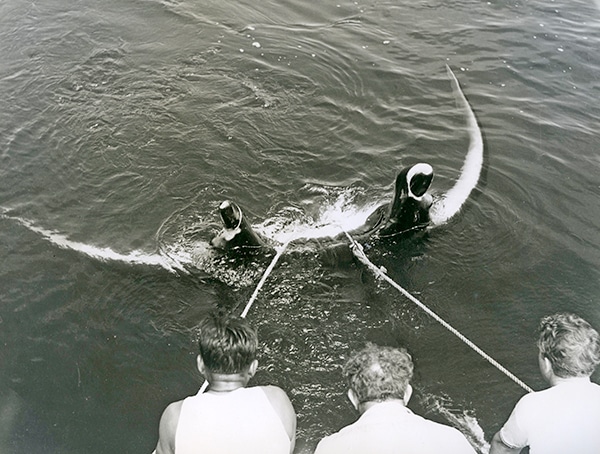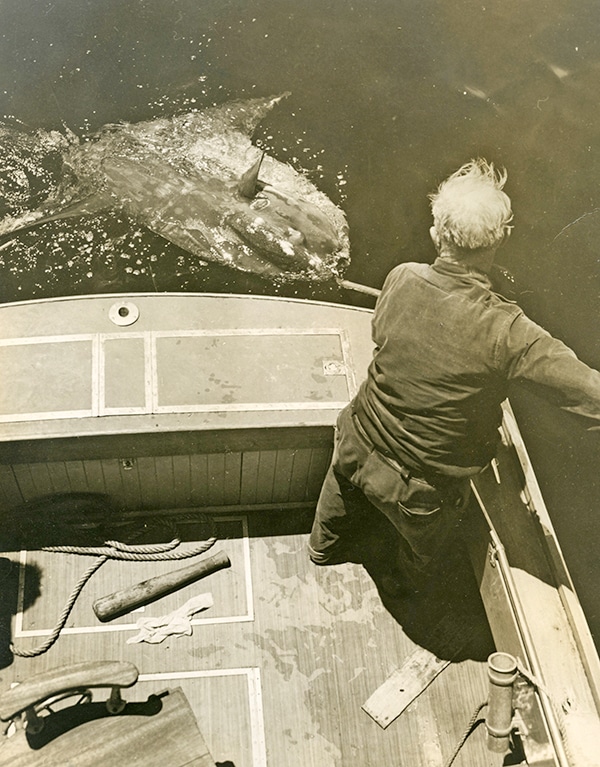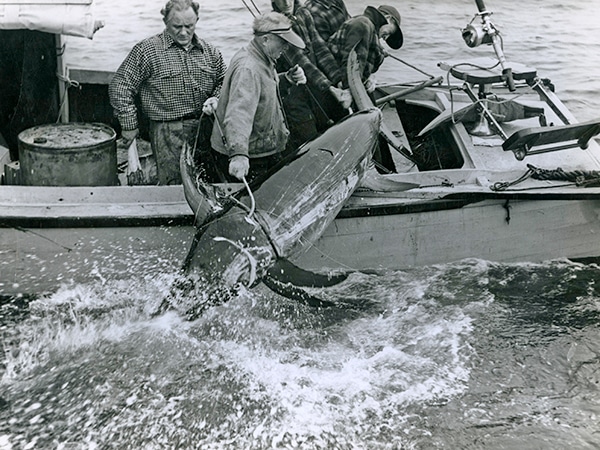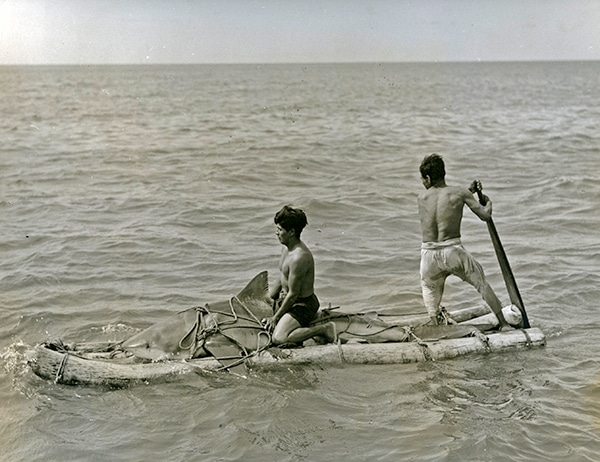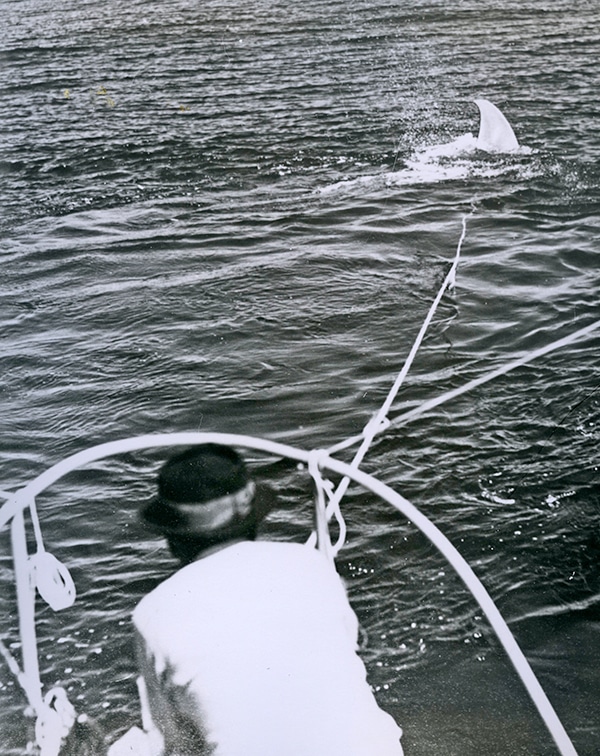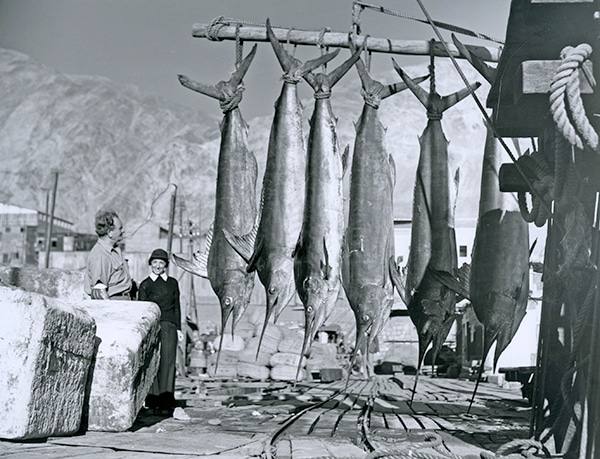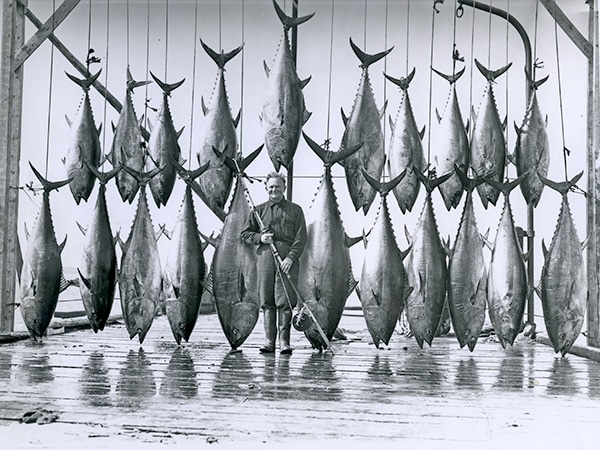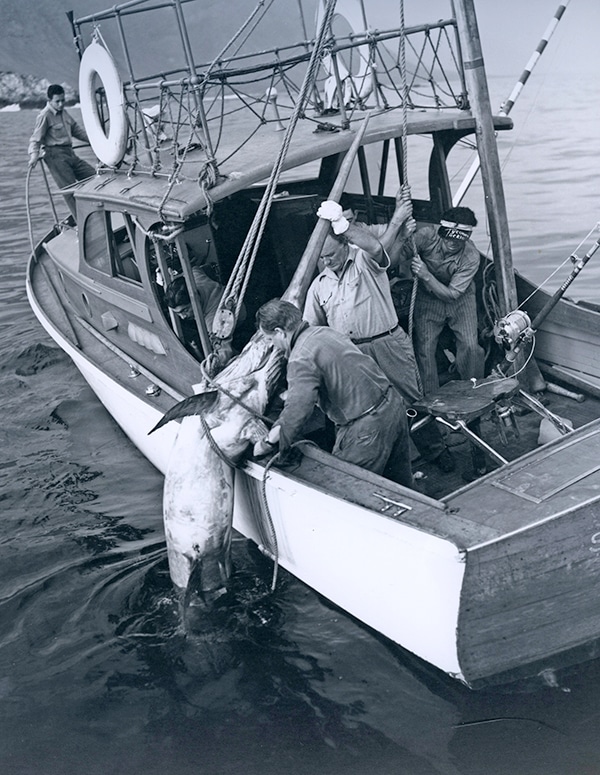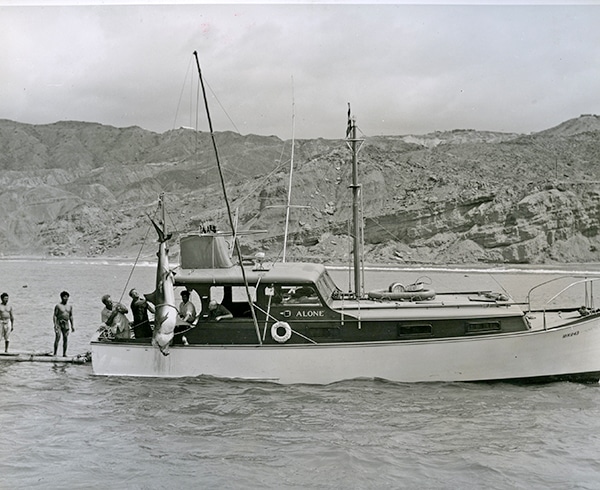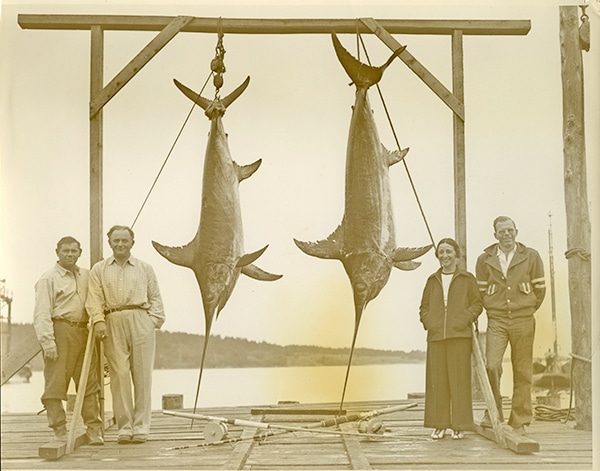Michael Lerner, the founder of the International Game Fish Association (IGFA), was a force to be reckoned with in the sport fishing world. The first meeting of the IGFA was held at the American Museum of Natural History in New York on June 7, 1939, just months before the beginning of World War II. The first meeting, discussed on 77th Street, turned into 75 years of contribution to marine science and conservation.
Lerner went from being an executive of Lerner Shops, a national chain of women’s fashion and accessories (now, New York & Company), to a well-traveled angler. He didn’t travel to far and wide places alone. He and his wife, Helen, fished for blue marlin in Bimini, striped marlin and swordfish off Chile, black marlin in Australia and New Zealand, swordfish off Peru, and tuna off Nova Scotia.
His expeditions were some of the firsts within the marine science community. He created relationships with the scientists of the American Museum of Natural History to further explore the oceans with their support. From 1935 to 1941, Lerner and his team led expedition parties to study game fish. The research broke new ground in the understanding of many saltwater species.
For a man that caught some of the most historical fish, he never received any records for them. He disqualified himself. No skin off his back, he was in it for the long haul. It wasn’t all about trophy catches; it was also about the people behind those reels.
His profile in the June 1945 issue of Life magazine referenced him as “The Good Will Ambassador of American Fishermen” by the National Association of Rod and Gun Editors members for his contributions to the sport as well as to the war effort. In 1942, he was a chairman of a committee, which devised kits for service men — one was an emergency kit, the other a fishing kit. The fishing kit contained dehydrated baits, six lines, a net, a knife and gloves. Lerner visited base camps to show movies and conducted an overseas tour that gave servicemen fishing pointers.
His fishing trips were the tales of legends — getting the scoop from the everyman to the rich man. One of those trips was his Nova Scotia fishing feat, which began from a chat with a gas station proprietor. He struck blue gold in those waters, a total of 5,526 pounds of bluefin tuna caught in 11 days. It was the technique that made those numbers count. A technique that worked for years, one that stemmed from his fishing pal, Ernest Hemingway.
The technique that he used, as described in Life, was “to strike the fish with every available ounce of strength, to set the hook at the earliest possible moment and then to fight every minute to bring the fish to the boat.”
Lerner was more than an angler; he was an explorer carrying the field of marine science on his back. In Life, he said, “Nobody knows very much, scientifically, about the fish in the Indian Ocean.”
That was his mindset. What’s next to find, where can I find it and how can it help.
Rare Historical IGFA Fishing Photos – 2
1938, Nova Scotia. Part of Lerner’s research was to study fish that have never seen the light before — historical expeditions were and still are a centerpiece of the IGFA’s mission. Photo Courtesy of E.K. Harry Library, IGFA
Photo Courtesy of E.K. Harry Library, IGFA
Rare Historical IGFA Fishing Photos – 3
Mako shark. Circa 1930s, Australia. Part of Lerner’s research was to study fish that have never seen the light before — historical expeditions were and still are a centerpiece of the IGFA’s mission. Photo Courtesy of E.K. Harry Library, IGFA
Photo Courtesy of E.K. Harry Library, IGFA.
Rare Historical IGFA Fishing Photos – 4
Michael Lerner (left) and Clive Firth (center) using taxidermy to preserve fish. Firth was the first delegate of the IGFA. Firth served two terms as president of the Game Fishing Association of Australia. The idea for the IGFA came out of meetings in Australia between Firth and key members of a 1939 expedition of the American Museum of Natural History. Part of Lerner’s research was to study fish that have never seen the light before — historical expeditions were and still are a centerpiece of the IGFA’s mission. Photo Courtesy of E.K. Harry Library, IGFA
Photo Courtesy of E.K. Harry Library, IGFA
Rare Historical IGFA Fishing Photos – 5
The boat marked from Tocopilla, Chile, pulled in a giant swordfish out of the South American waters. Part of Lerner’s research was to study fish that have never seen the light before — historical expeditions were and still are a centerpiece of the IGFA’s mission. Photo Courtesy of E.K. Harry Library, IGFA
Photo Courtesy of E.K. Harry Library, IGFA
Rare Historical IGFA Fishing Photos – 6
Michael Lerner (back, left) pulls in a hefty blue marlin. Part of Lerner’s research was to study fish that have never seen the light before — historical expeditions were and still are a centerpiece of the IGFA’s mission. Photo Courtesy of E.K. Harry Library, IGFA
Photo Courtesy of E.K. Harry Library, IGFA
Rare Historical IGFA Fishing Photos – 7
Mako shark. Bimini, 1939. Part of Lerner’s research was to study fish that have never seen the light before — historical expeditions were and still are a centerpiece of the IGFA’s mission. Photo Courtesy of E.K. Harry Library, IGFA
Photo Courtesy of E.K. Harry Library, IGFA
Rare Historical IGFA Fishing Photos -11
The Humboldt squid catch off South America. Part of Lerner’s research was to study fish that have never seen the light before — historical expeditions were and still are a centerpiece of the IGFA’s mission. Photo Courtesy of E.K. Harry Library, IGFA
Photo Courtesy of E.K. Harry Library, IGFA
Rare Historical IGFA Fishing Photos -12
Michael Lerner (left) and Capt. Bill Hatch (right) pictured with their monster swordfish caught off Tocopilla, Chile in 1940. The weights of these giants were 630-pounds and 454-pounds. Part of Lerner’s research was to study fish that have never seen the light before — historical expeditions were and still are a centerpiece of the IGFA’s mission. Photo Courtesy of E.K. Harry Library, IGFA
Photo Courtesy of E.K. Harry Library, IGFA
Rare Historical IGFA Fishing Photos – 13
Mako. 1939, Bimini. Part of Lerner’s research was to study fish that have never seen the light before — historical expeditions were and still are a centerpiece of the IGFA’s mission. Photo Courtesy of E.K. Harry Library, IGFA
Photo Courtesy of E.K. Harry Library, IGFA
Rare Historical IGFA Fishing Photos – 23
Michael Lerner (middle) fishing a giant manta ray off South America (1940). _Part of Lerner’s research was to study fish that have never seen the light before — historical expeditions were and still are a centerpiece of the IGFA’s mission. _ Photo Courtesy of E.K. Harry Library, IGFA
Photo Courtesy of E.K. Harry Library, IGFA
Rare Historical IGFA Fishing Photos – 14
Michael Lerner pulled in a mola fish (sunfish). Part of Lerner’s research was to study fish that have never seen the light before — historical expeditions were and still are a centerpiece of the IGFA’s mission. Photo Courtesy of E.K. Harry Library, IGFA
Photo Courtesy of E.K. Harry Library, IGFA
Rare Historical IGFA Fishing Photos – 15
Michael Lerner (far left) with a giant swordfish off Nova Scotian waters (1941). Part of Lerner’s research was to study fish that have never seen the light before — historical expeditions were and still are a centerpiece of the IGFA’s mission. Photo Courtesy of E.K. Harry Library, IGFA
Photo Courtesy of E.K. Harry Library, IGFA
Rare Historical IGFA Fishing Photos – 16
Tiger shark aboard a 9-foot balsa wood raft in Peru. Part of Lerner’s research was to study fish that have never seen the light before — historical expeditions were and still are a centerpiece of the IGFA’s mission. Photo Courtesy of E.K. Harry Library, IGFA
Photo Courtesy of E.K. Harry Library, IGFA
Rare Historical IGFA Fishing Photos – 17
Shark on the line in South American waters in 1940. Part of Lerner’s research was to study fish that have never seen the light before — historical expeditions were and still are a centerpiece of the IGFA’s mission. Photo Courtesy of E.K. Harry Library, IGFA
Photo Courtesy of E.K. Harry Library, IGFA
Rare Historical IGFA Fishing Photos – 18
Michale and Helen Lerner off South America in 1940. Part of Lerner’s research was to study fish that have never seen the light before — historical expeditions were and still are a centerpiece of the IGFA’s mission. Photo Courtesy of E.K. Harry Library, IGFA
Photo Courtesy of E.K. Harry Library, IGFA
Rare Historical IGFA Fishing Photos – 19
Michael Lerner with a week’s catch of bluefin tuna off Wedgeport, Nova Scotia. Part of Lerner’s research was to study fish that have never seen the light before — historical expeditions were and still are a centerpiece of the IGFA’s mission. Photo Courtesy of E.K. Harry Library, IGFA
Photo Courtesy of E.K. Harry Library, IGFA
Rare Historical IGFA Fishing Photos – 20
Michael Lerner holds the estimated 8-foot bill of a swordfish as the crew pulls the monster into the boat. Part of Lerner’s research was to study fish that have never seen the light before — historical expeditions were and still are a centerpiece of the IGFA’s mission. Photo Courtesy of E.K. Harry Library, IGFA
Photo Courtesy of E.K. Harry Library, IGFA
Rare Historical IGFA Fishing Photos – 21
Michael Lerner and his team aboard Alone, which is out of Quogue, Long Island, pulled up a sizeable tiger shark in the waters of Peru. Part of Lerner’s research was to study fish that have never seen the light before — historical expeditions were and still are a centerpiece of the IGFA’s mission. Photo Courtesy of E.K. Harry Library, IGFA
Photo Courtesy of E.K. Harry Library, IGFA
Rare Historical IGFA Fishing Photos – 22
Two swordfish caught by Michael and Helen Lerner off Cape Breton, Nova Scotia on the American Museum of Natural History Expedition. Tommy Gifford (far left) was Mr. Lerner’s guide for the trip, Larry Bagby (far right) was Mrs. Lerner’s guide for the trip. Mr. Lerner’s fish weight 195-pounds and Mrs. Lerner’s fish weighed 295-pounds. Part of Lerner’s research was to study fish that have never seen the light before — historical expeditions were and still are a centerpiece of the IGFA’s mission. Photo Courtesy of E.K. Harry Library, IGFA
Photo Courtesy of E.K. Harry Library, IGFA
